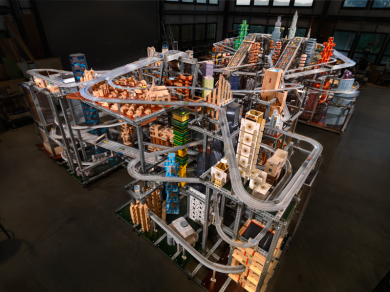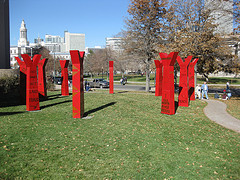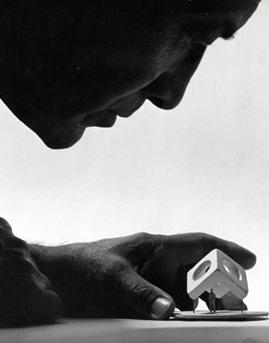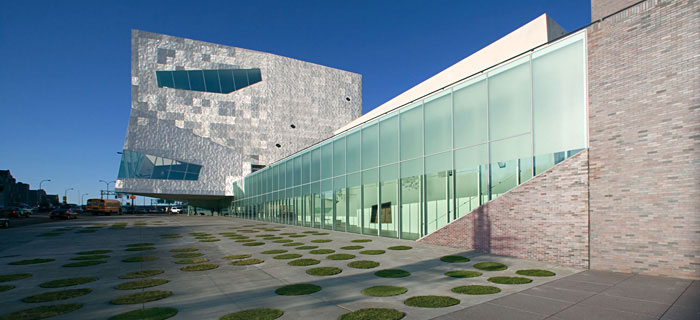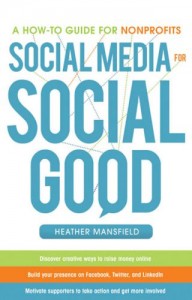With the holidays upon us, Baby Boomers and Generation X'ers selflessly reach deep into their pockets, beyond the lint, to give what they can afford 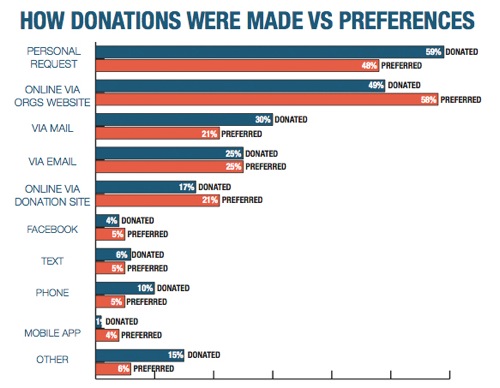 to not-for-profit organizations. But what about the Millennials? How do we get the generation classified in the media and not-for-profit circles as self-absorbed and self-interested to donate? The Case Foundation presents “Millennial Donors Report 2011,” a survey and summary of the motivations and preferences of the Millennials when it comes to making a donation.
to not-for-profit organizations. But what about the Millennials? How do we get the generation classified in the media and not-for-profit circles as self-absorbed and self-interested to donate? The Case Foundation presents “Millennial Donors Report 2011,” a survey and summary of the motivations and preferences of the Millennials when it comes to making a donation.
Earlier this fall, I posted on the best practices for engaging Millennials, the generation of 20 to 35 year olds that is dramatically affecting the way organizations market their brand and product. So in the true spirit of the holidays, let’s take a look at what may seem like an impossible task: getting the Millennials to donate.
The report surveyed about 3,000 Millennials ranging in age from 20-35 years old. Perhaps the most revealing find of the survey is the following: above all, Millennials value trust. A whopping 90% of Millennial donors surveyed reported they would stop giving to an organization if they had any reason not to trust it. What does this mean for not-for-profits? Build personal relationships with your donors and clearly define where and how the donation is used. Because the Millennials are young professionals, students and young adults with limited funds, they are most concerned their donation of any size will be utilized responsibly. Establishing trust with Millennials will encourage future giving and ensure a long-standing donor-organization relationship.
The report is divided into the categories: giving, giving motivators, special events, communication, volunteering, young professional groups and taking action, as they relate to Millennials. Here is a breakdown of the key findings and the implications for your organization
1. 93% of Millennials gave to not-for-profits in 2010
What this mean for you: Millennials tend to make small donations to multiple organizations, as opposed to the Baby Boomers or Generation X that are loyal to a single organization, gifting large sums of money. They ARE donating, which I am sure comes as a great surprise to the many who tag this generation as plugged-in and tuned-out to the rest of world.
2. An online search using an engine such as Google is the #1 way Millennials get information about a not-for-profit organization
What this means for you: How does your organization appear in a Google search? Millennials often base their decision to donate on the organizations appearance in an online search. Pay attention to your organization’s description on search engines.
3. 57% of Millennial donors gave in response to a personal ask
What this means for you: Though the Millennials seem to inhabit the online space more than their physical space, they are surprisingly more inclined to donate in response to a personal ask. However, that is not reflected in their preferred method of donating- 58% of Millennial donors reported they prefer to make that donation online. An unsuspected dichotomy…
The least preferred methods of the Millennial donors are via mobile applications (4%), the phone (5%) and text message (5%).
Reference the graphic “How donations were made vs preferences” in the report to be sure your organization is providing Millennials with the correct channel for giving that addresses their preferences (the most popular of which are online via your website, email, a donation site, or a personal request). Do not let a Millennial donor slip away by simply neglecting to provide the giving tool that best meets their preferences.
4. 79% of the Millennials surveyed reported having volunteered at least once in 2010
What this means for you: Just as expected of the Millennials, they are strapped for time as young adults and professionals. Thus the resounding reason for not volunteering is lack of time. Millennials are not interested in ongoing volunteer commitments. They prefer one-time, convenient volunteer activities. And obviously, they prefer to volunteer with friends than alone- the ultimate trademark of the Millennials. Of those surveyed, 61% reported they would prefer to volunteer with friends and family as compared to the 44% that indicated they prefer to volunteer on their own.
Get creative with the volunteer opportunities you present to the Millennials. They should be convenient, meaningful, group-friendly and perhaps provide an opportunity for professional development. As we saw when considering how donations are made, Millennials respond favorably to person-to-person contact and requests. Do not hesitate to simply ask Millennials to donate their time. As it turns out, 45% of the respondents reported their reason for not volunteering as never having been asked. So ask away!
5. 85% of Millennial donors are motivated to donate by a compelling and meaningful mission or cause, while only 2% of Millennial donors are motivated by a celebrity endorsement.
What this means for you: We already know Millennials crave meaningful content. They Tweet, re-Tweet and post moving videos, inspiring quotes and stirring news reports. Your website can be a perfect tool for tapping into the Millennials need for meaningful content. Share real-life, specific stories of how a donation supported your cause and not-for-profit. Invite the Millennials to be a part of meetings and discussions regarding the inner-workings of your organization and your strategic plan for the future. Millennials crave meaning, worth and inclusion. Invite them to collaborate with you and they will trust your organization.
The report provides cutting-edge research, insight and practical solutions for attracting and developing relationships Millennial donors. As researchers slowly uncover the hidden truths of these mysterious, influential Millennials and their relationship with the not-for-profit sector, we here at Technology in the Arts will continue to bring you the breaking news!
 This Wednesday, 1/18/2012, Wikipedia, Reddit , and Boing Boing will go dark in protest of the Stop Online Piracy Act that is being considered in US House and the Protect Intellectual Property Act in the US Senate. These protesters are asking for the US public to call or write to their elected officials regarding the proposed legislation. Bloggers in this forum have taken a stance against limiting open source and net neutrality in the past and these two bills pose no less of a threat to the innovative culture that is open source.
This Wednesday, 1/18/2012, Wikipedia, Reddit , and Boing Boing will go dark in protest of the Stop Online Piracy Act that is being considered in US House and the Protect Intellectual Property Act in the US Senate. These protesters are asking for the US public to call or write to their elected officials regarding the proposed legislation. Bloggers in this forum have taken a stance against limiting open source and net neutrality in the past and these two bills pose no less of a threat to the innovative culture that is open source.





